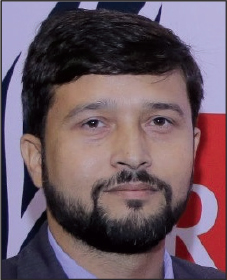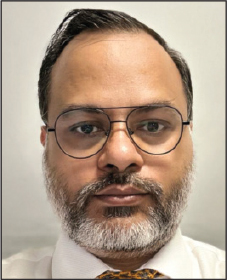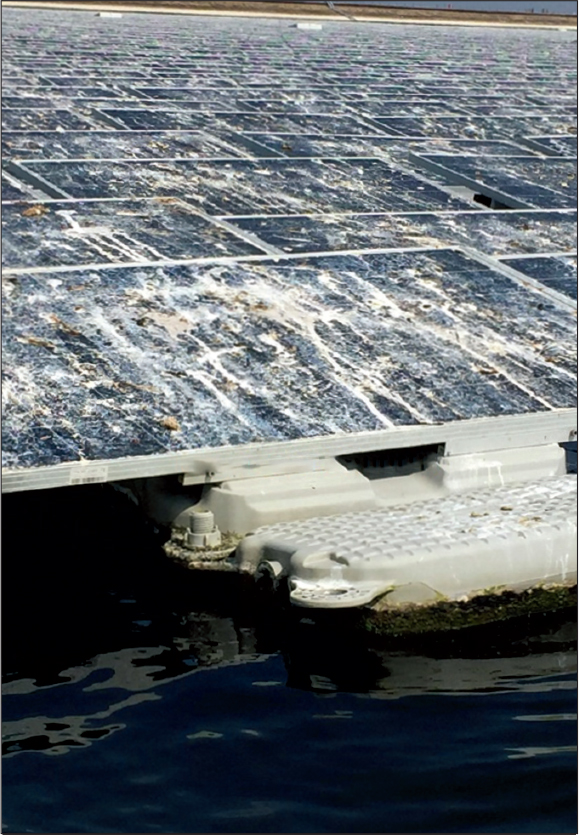By Satish Pandey, Head – Analytics and Advisory; Sourav Kumar, Head – BU and Sanya Verma, Mahindra Teqo



The global solar business has experienced exponential expansion in recent years. The growth of the sector has been hampered by several issues, but scientists and researchers are looking for novel approaches to make solar power more practical and attractive from an economic standpoint. To this end, India’s abundant water reservoirs, which have previously been used for a variety of purposes, are now being utilised for the construction of cutting-edge floating solar parks.
India is still in the early phases of developing floating solar photovoltaics (FSPV) as a technology. There have only been a few projects installed so far, totalling 1.272 GW in capacity. However, there are reportedly over 3.8 GW worth of projects at various stages of development.
Since FSPV plants are installed on the water’s surface rather than on land, managing operations and maintenance (O&M) difficulties in such circumstances can be challenging. Through our research, we came across the following key challenges in FSPV systems.

Challenge 1: Bird droppings
Bird droppings are among the most aggressive and tenacious types of soiling. Not only do they increase cleaning efforts, they may even have the effect of etching the solar system. For solar operators, there are a number of repercussions if bird droppings stay on a module for an extended period of time, including the possibility of severe yield reductions.

Challenge 2: Growth of lichen
Solar arrays are exposed to both sunlight and water, which facilitate the growth of lichen. Nutrients such as nitrogen and ammonia speed up growth, especially as bird droppings are rich in nitrogen. The lifetime of a panel as well as its output and performance are known to be reduced as a result of such staining, which is also known to result in persistent module shadowing.

Challenge 3: Sea salt accumulation
As FSPV panels are installed close to the ocean, they are vulnerable to salt contamination. As a result, an installed PV panel’s electrical performance may be affected over time by sea salt deposition.
Challenge 4: Rusting of solar modules and durability
As these projects are set up in water, there is a constant need to keep the solar modules floating, so that they do not encounter much water and rusting is prevented. For this reason, there is a need to use solar modules of high quality that meet the standards of quality and corrosion testing.
Challenge 5: Occupational safety and health (OSH) hazards
One of the major concerns during the O&M of FSPV plants is the safety and health of workers, since the entire plant is located on a waterbody. Ensuring that the members of the cleaning team are certified swimmers is one of the essential prerequisites for carrying out cleaning activity. The workforce on these types of sites must have IEC certifications such as IEC 60947 Parts I, II, III or IS 60947 Parts I, II, III, which determine the standards for safety during the switch from high voltage to low voltage or vice versa. There is a need to develop global standards for safety during O&M.
Here are some other problems and their mitigation plans:
- Problem: Heat stress due to exposure to direct solar radiation
Mitigation plan: It is important to build better technologies, training modules, OSH standards, work organisation/shift modifications, etc.
2. Problem: Electrical leakage due to extreme humidity
Mitigation plan: For the health and safety of personnel, personal protective equipment (PPE) should be worn during installation and maintenance, and safe disposal procedures should be followed.
3. Problem: Uncertainty of weather
Mitigation plan: To safeguard workers, suitable design interventions can be introduced, such as safety harnesses, storm shelters, and PPE for occupational safety and health. Weather forecast data should be taken into account when scheduling installation and maintenance tasks, and the necessary safety training should be offered for emergency evacuations during such events.
4. Problem: Walkway access
Mitigation plan: Most FSPVs have a single walkway. However, for human safety, there should be a minimum of two walkways in opposite directions to use in case of emergencies such as fire.
5. Problem: Emergency evacuation/rescue
Mitigation plan: For an emergency situation where evacuation or rescue is required, a rescue boat must be present at every plant location.
FSPV cleaning techniques
To mitigate the challenges of bird droppings, growth of lichen and others, solar panels need to be cleaned at regular intervals. Sprinkler cleaning and robotic cleaning are two techniques that can be used. In sprinkler cleaning, both air and water can be used. Sprinklers are suitable for arid regions. They simulate the cleaning effect of rainfall, thereby cleaning panels at a relatively low cost. Meanwhile, despite their high initial cost, robotic maintenance techniques can be used to maintain and repair floating solar panels in a cost-effective way that saves water.

Initial design considerations for FSPVs
To avoid unbalancing during the O&M of an FSPV plant, certain anchoring and mooring considerations need to be investigated, such as establishing operation conditions, selecting the design criteria, collecting site information, establishing environmental design conditions and determining floating system characteristics.
The various mooring system components are designed and specified according to the preceding processes. These components consist of anchors, mooring lines and connecting equipment. The mooring lines may be affected by strong winds during bad weather. So, to prevent the to-and-fro motion of the mooring system, the tension of the mooring lines must be checked and maintained at regular intervals. The tension in the lines must conform with the location of the plant.
The body of the float, the floating system mounting mechanism, and the bolts and nuts are the three most fundamental parts of a floating array. A floating power station’s stability and safety are determined by product design, material choice, processing method and product testing in addition to its own strength, toughness, environmental conservation practices, weather resistance and service life. Lowering the wall thickness requirement for floating bodies by using subpar materials and cutting corners will significantly shorten a floating solar system’s useful life and increase project risks.
Conclusion
The O&M of a floating solar system is a challenging job as the technology is new and requires working with cables in water. Manual cleaning operations require the cleaners to stand on unbalanced surfaces. For an FSPV plant to be stable and safe, high quality float bodies, float mounting structures, connecting wires and equipment must be chosen. Further, the workforce must have professional certification in swimming to perform cleaning activities at the plant. The workforce must also perform cleaning activities with proper safety precautions, and the mooring lines should be checked and maintained to avoid unbalancing.
It is further recommended to have a minimum of two walkways in opposite directions for safety during emergency evacuation situations. The PPE kit used for the protection of workers must include floaters. Risk assessment for weather conditions must be done before performing the cleaning activity, and a rescue boat must be present at every plant location for emergency situations.
Going forward, there are prospects for the creation of universal training and international OSH standards for the floating solar industry, particularly regarding electrical safety.


